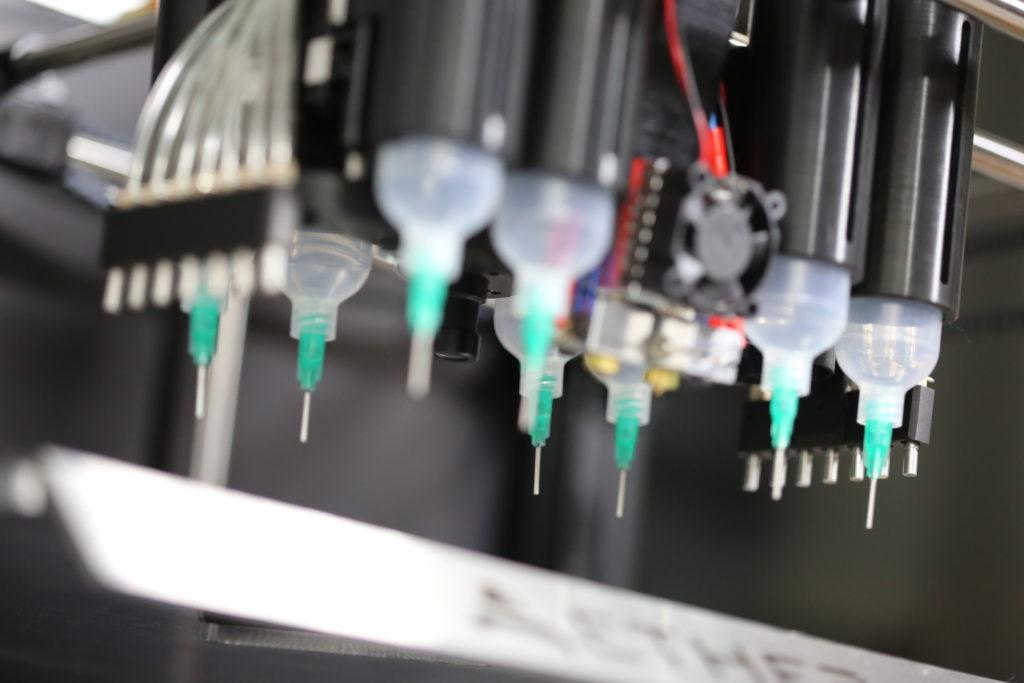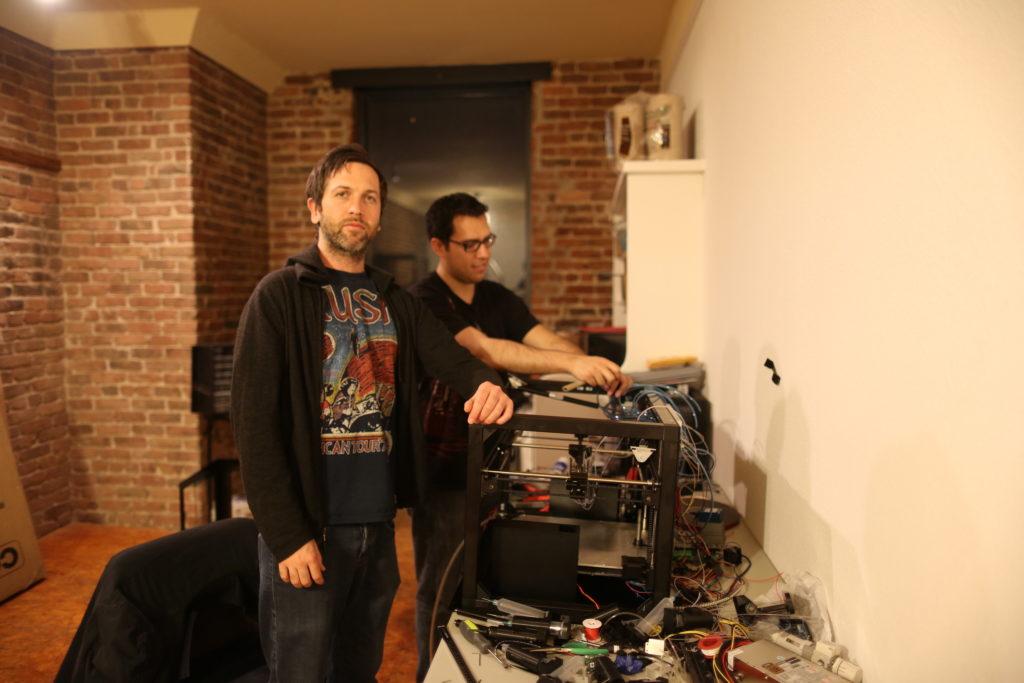Stanford University Joins Aether’s Research Project Collaboration, Will Receive Several Aether 1 Bioprinter Beta Units
 A couple of months ago, San Francisco startup Aether announced that they would be helping to facilitate a giant research project collaboration by donating beta units of their soon-to-be-released Aether 1 bioprinter to several universities, research institutions, and nonprofits. The donations serve several purposes: to get the Aether name out there among prominent scientific organizations, to push the advancement of accessible and inexpensive bioprinting, and to begin eliminating animal testing in favor of 3D printed tissue. (All of the institutions receiving Aether 1 printers have agreed not to carry out any animal testing for the duration of their collaborations.)
A couple of months ago, San Francisco startup Aether announced that they would be helping to facilitate a giant research project collaboration by donating beta units of their soon-to-be-released Aether 1 bioprinter to several universities, research institutions, and nonprofits. The donations serve several purposes: to get the Aether name out there among prominent scientific organizations, to push the advancement of accessible and inexpensive bioprinting, and to begin eliminating animal testing in favor of 3D printed tissue. (All of the institutions receiving Aether 1 printers have agreed not to carry out any animal testing for the duration of their collaborations.)
 Aether has just added another big name to their collaborative project in Stanford University, which will receive several Aether 1 beta units for in silico modeling research at the Center for Cancer Nanotechnology Excellence and Translation. The printers will be used to 3D print biological materials for comparison with in silico, or computer simulated, cells, tissues and organs, for the purpose of validating the results of the simulations.
Aether has just added another big name to their collaborative project in Stanford University, which will receive several Aether 1 beta units for in silico modeling research at the Center for Cancer Nanotechnology Excellence and Translation. The printers will be used to 3D print biological materials for comparison with in silico, or computer simulated, cells, tissues and organs, for the purpose of validating the results of the simulations.
Aether will also monitor the research and work to create new customizations for the high-precision needs of the project, as well as developing solutions to any issues encountered. The Center for Cancer Nanotechnology Excellence and Translation will provide feedback on the printers, thus helping Aether to improve their machines before their official release.
“We were very excited to have one of the most incredible research centers on Earth express an interest in working with our soon-to-be-released Aether 1 Bioprinter,” said Aether CEO Ryan Franks. “It was fantastic to learn they specifically wanted to use Aether 1 to support research involving computer simulation models which may simulate the human body better than the current animal model. This was perfectly aligned with Aether’s mission to reduce and eliminate animal testing. This would of course be better ethically, but may also dramatically improve the speed of drug and therapy discovery, and make human clinical trials safer.”
Not only does the Aether 1 system allow for the use of an incredible 24 extruders (2 FFF extruders, 8 syringe, and 14 droplet jet extruders) in one print, with options for additional accessories such as a UV LED lamp, laser engraver, CNC drill, microscope, and more, it’s far less expensive than most commercial bioprinters, which typically retail for around $250,000. The Aether 1 costs only $9,000. It almost sounds too good to be true, but the fact that so many revered research institutions have signed on to use it is a good indication that this is, in fact, one serious invention. Aether is currently expanding their engineering staff and planning to ship the beta units out as soon as possible.
 The Center for Cancer Nanotechnology Excellence and Translation is the first research facility at Stanford University to use an Aether 1 bioprinter, but a positive experience could lead to interest from the university’s other cancer and other medical research facilities. An expanded presence inside such a major university could be a huge opportunity for Aether and their goal of one day eliminating animal testing altogether. They’re not the only ones working toward that goal – several other institutions have recently developed 3D printing applications that may not only replace animal testing, but deliver better results, saving the lives of animals and humans at the same time. Discuss in the Stanford Aether forum at 3DPB.com.
The Center for Cancer Nanotechnology Excellence and Translation is the first research facility at Stanford University to use an Aether 1 bioprinter, but a positive experience could lead to interest from the university’s other cancer and other medical research facilities. An expanded presence inside such a major university could be a huge opportunity for Aether and their goal of one day eliminating animal testing altogether. They’re not the only ones working toward that goal – several other institutions have recently developed 3D printing applications that may not only replace animal testing, but deliver better results, saving the lives of animals and humans at the same time. Discuss in the Stanford Aether forum at 3DPB.com.
Subscribe to Our Email Newsletter
Stay up-to-date on all the latest news from the 3D printing industry and receive information and offers from third party vendors.
You May Also Like
Profiling a Construction 3D Printing Pioneer: US Army Corps of Engineers’ Megan Kreiger
The world of construction 3D printing is still so new that the true experts can probably be counted on two hands. Among them is Megan Kreiger, Portfolio Manager of Additive...
US Army Corps of Engineers Taps Lincoln Electric & Eaton for Largest 3D Printed US Civil Works Part
The Soo Locks sit on the US-Canadian border, enabling maritime travel between Lake Superior and Lake Huron, from which ships can reach the rest of the Great Lakes. Crafts carrying...
Construction 3D Printing CEO Reflects on Being Female in Construction
Natalie Wadley, CEO of ChangeMaker3D, could hear the words of her daughter sitting next to her resounding in her head. “Mum, MUM, you’ve won!” Wadley had just won the prestigious...
1Print to Commercialize 3D Printed Coastal Resilience Solutions
1Print, a company that specializes in deploying additive construction (AC) for infrastructure projects, has entered an agreement with the University of Miami (UM) to accelerate commercialization of the SEAHIVE shoreline...






























